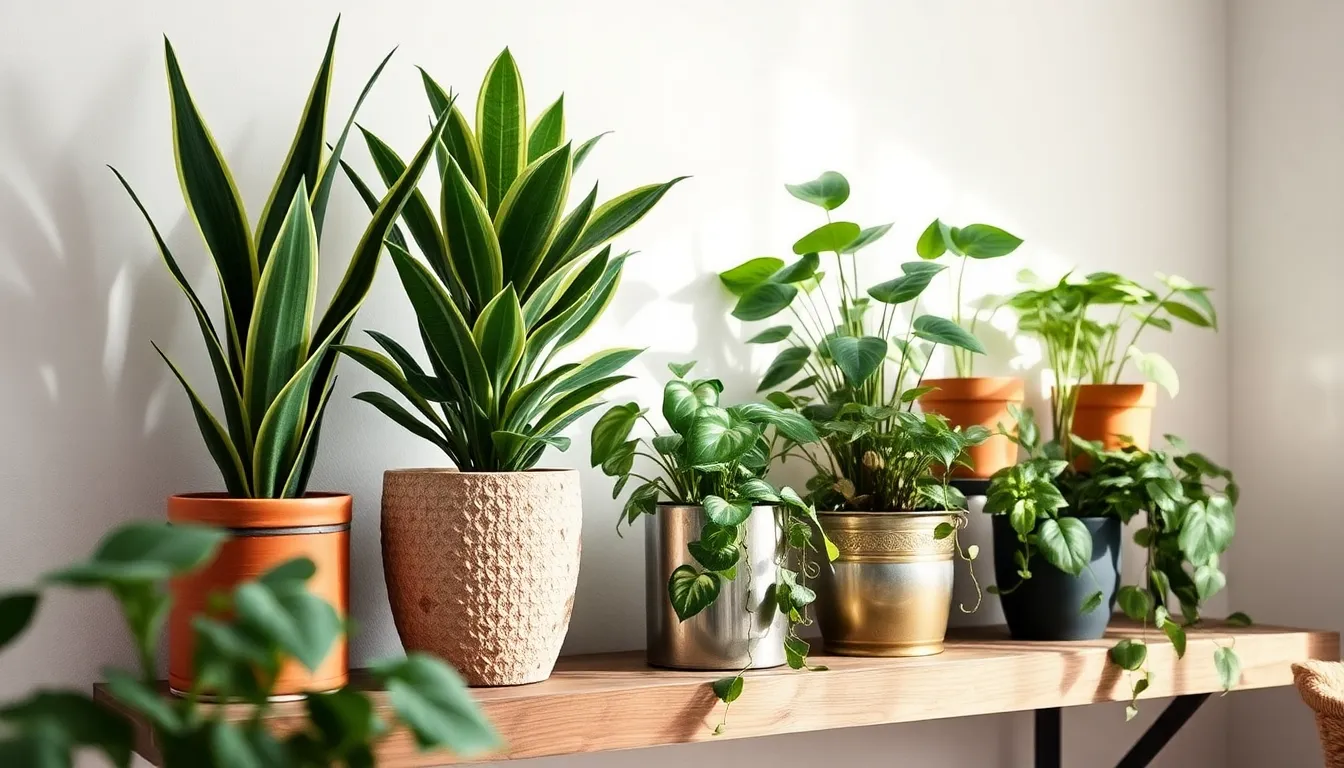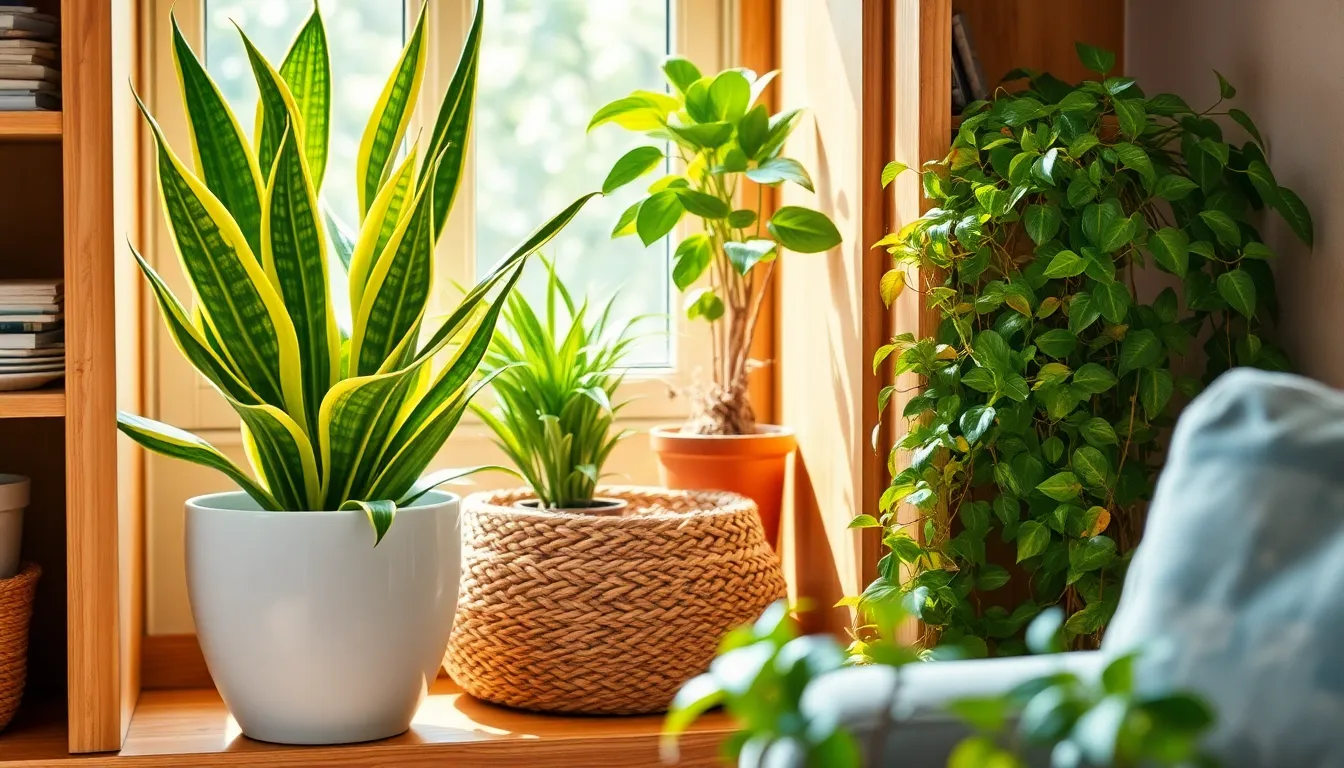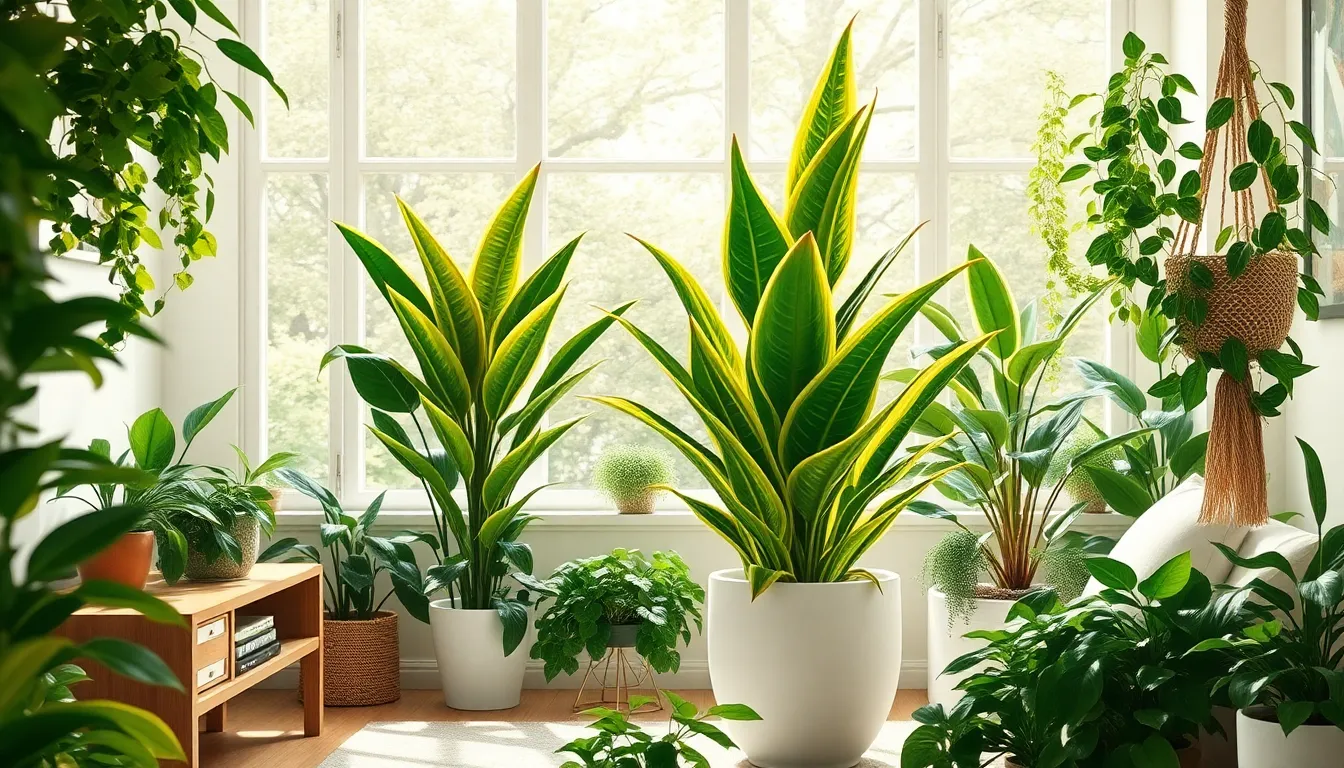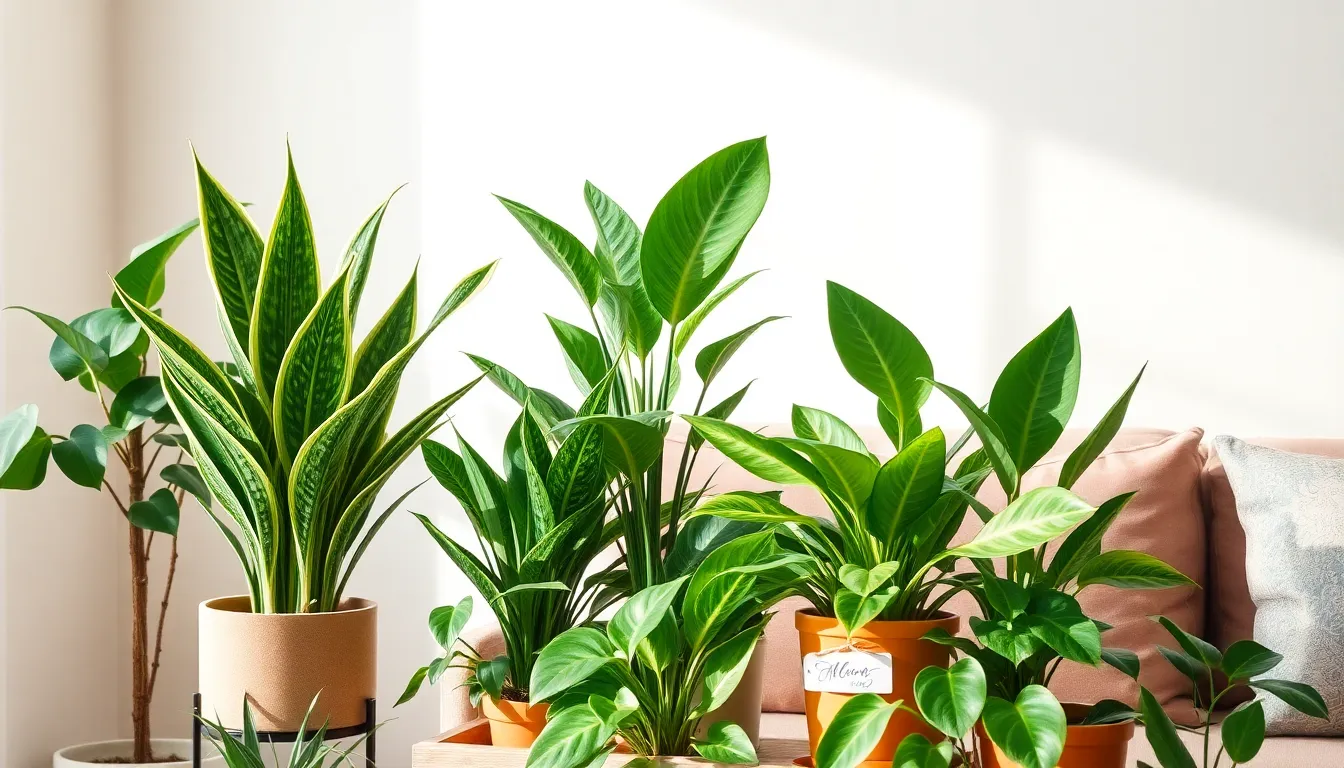In the cozy confines of our homes, where sunlight might be a rare guest, creating a lush, green oasis might seem like a distant dream. Yet, for both the seasoned gardener and the eager novice, the prospect of nurturing vibrant indoor plants is not only possible but delightfully simple when you choose the right varieties that thrive in low-light conditions.
Bringing nature indoors offers more than just aesthetic appeal; it fosters a sense of tranquility and well-being. This article introduces you to ten stunning indoor plants that flourish with minimal sunlight, proving that you don’t need a sun-drenched room to enjoy the beauty of greenery.
Prepare to be inspired as we guide you through these resilient plant options that promise to liven up any dim corner of your home. You’ll learn practical tips for caring for each plant, ensuring that even the darkest spots can burst with life and color.
Understanding Low-Light Plant Needs
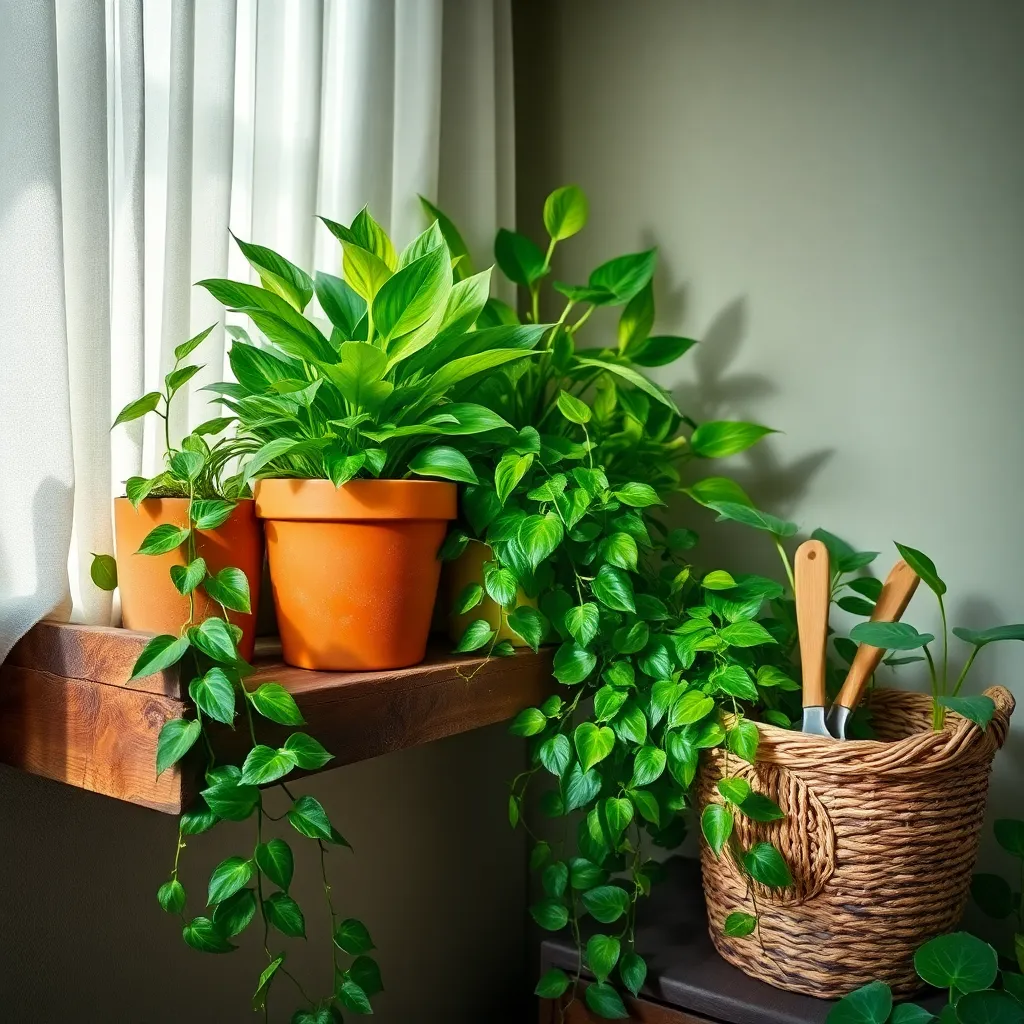
In spaces with limited sunlight, it’s essential to choose plants that naturally thrive in shaded environments. Low-light plants have adapted to grow under the canopy of larger plants, making them perfect for indoor settings with indirect light.
Many of these plants require minimal direct sunlight, but they still appreciate some ambient light. Position them near windows with sheer curtains or in rooms with bright, indirect light to mimic their natural habitat.
It’s crucial to use the right soil to ensure your low-light plants remain healthy. Opt for a well-draining potting mix, such as a blend of peat moss, perlite, and a bit of sand, which prevents root rot by allowing excess water to escape.
Watering frequency is another important factor to consider when caring for low-light plants. Generally, it’s best to water these plants only when the top inch of soil feels dry to the touch, avoiding overwatering which can lead to root problems.
For advanced care, consider rotating your plants every few weeks to ensure even growth. This simple practice can prevent them from leaning towards the light source and helps maintain a balanced shape.
- Check soil moisture regularly to avoid overwatering.
- Use a pot with drainage holes to prevent water accumulation.
- Consider a humidity tray if the indoor air is particularly dry.
Low-light plants can also benefit from occasional feeding during the growing season. Use a balanced, water-soluble fertilizer every 4-6 weeks in spring and summer, but reduce feeding in fall and winter when plant growth slows.
Choosing the Perfect Indoor Plants
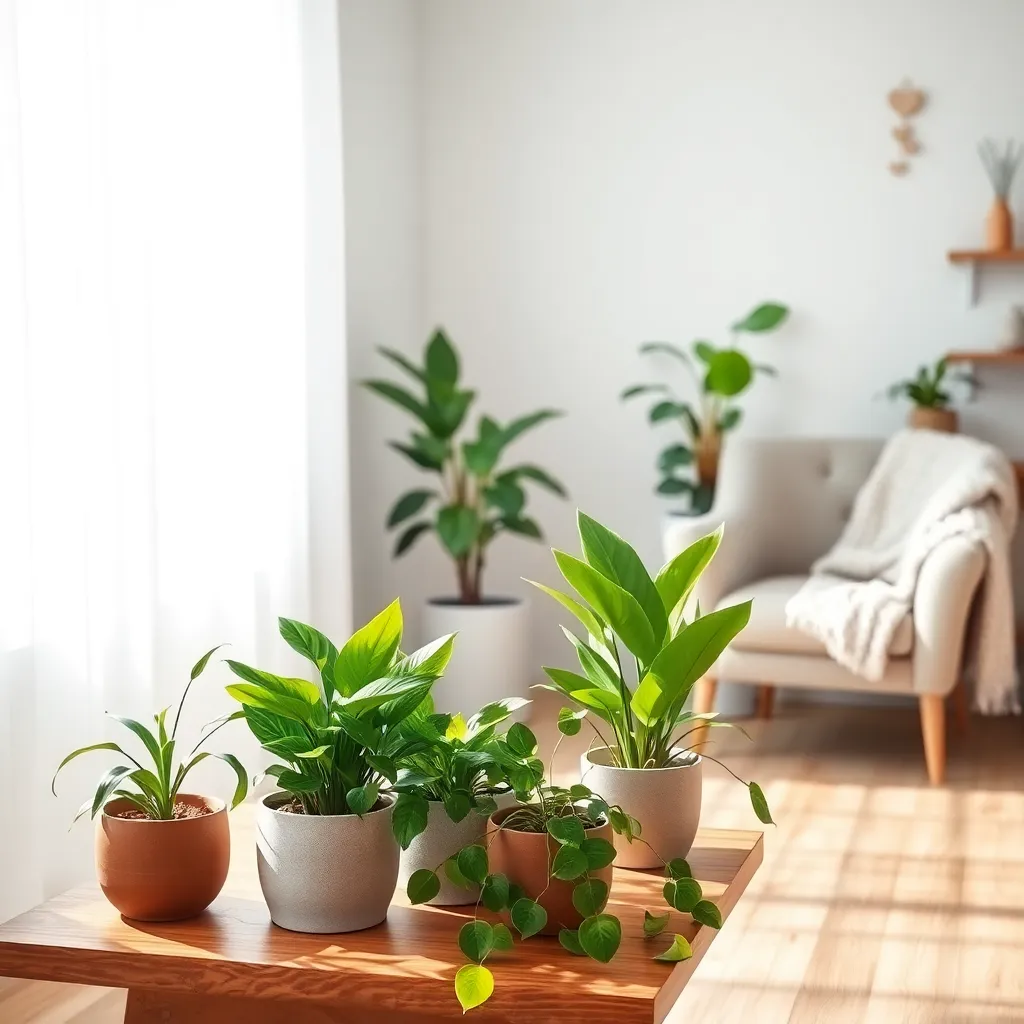
Selecting the right indoor plants for low-light conditions is crucial to ensure their health and longevity. Begin by assessing the available light in your space, which might vary from room to room, depending on window size and orientation.
Once you’ve identified the lighting conditions, choose plants that are specifically known for thriving in low light. Some excellent options include the Snake Plant, ZZ Plant, and Pothos, all of which are resilient and adapt well to less-than-ideal lighting.
Consider the care requirements of each plant to ensure they fit your lifestyle and routine. Most low-light plants prefer well-draining soil, so a potting mix with peat and perlite works well to prevent waterlogging.
Watering is another critical factor in keeping low-light plants healthy; overwatering is a common mistake. Aim to water your plants every two to three weeks, allowing the soil to dry out between waterings to prevent root rot.
Peace Lily: A Tranquil Choice
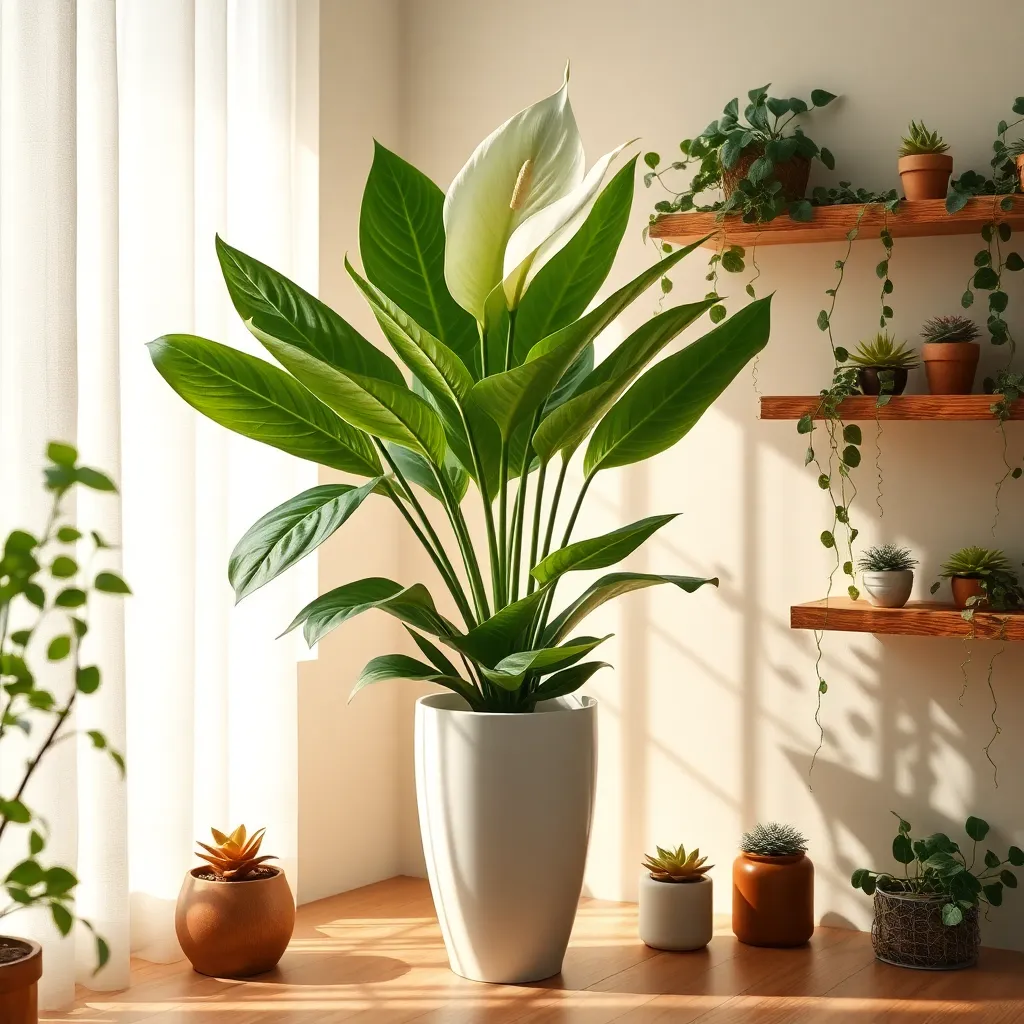
The Peace Lily, known for its elegant white blooms and lush green leaves, thrives in low-light environments, making it an ideal indoor plant. It not only adds a touch of tranquility to your home but also purifies the air by removing toxins like formaldehyde and benzene.
When placing your Peace Lily, choose a spot that receives indirect sunlight, such as a north-facing window or a shaded area in your room. It is crucial to avoid direct sunlight as it can scorch the leaves and stunt the plant’s growth.
Water your Peace Lily moderately, ensuring the soil remains consistently moist without being waterlogged. A good rule of thumb is to water when the top inch of soil feels dry to the touch, typically about once a week.
For best results, use a well-draining potting mix that retains some moisture while allowing excess water to escape. A blend of peat moss and perlite works well, providing the right balance of moisture and aeration for this plant’s root system.
To encourage more blooms, fertilize your Peace Lily every six to eight weeks during the growing season with a balanced, water-soluble fertilizer. Always dilute the fertilizer to half the recommended strength to avoid overfeeding, which can harm the plant.
For advanced care, consider wiping the leaves with a damp cloth every few weeks to keep them dust-free and maximize photosynthesis. This simple maintenance task not only boosts your plant’s health but also enhances its beauty, ensuring your Peace Lily remains a striking focal point in your home.
ZZ Plant: A Hardy Survivor
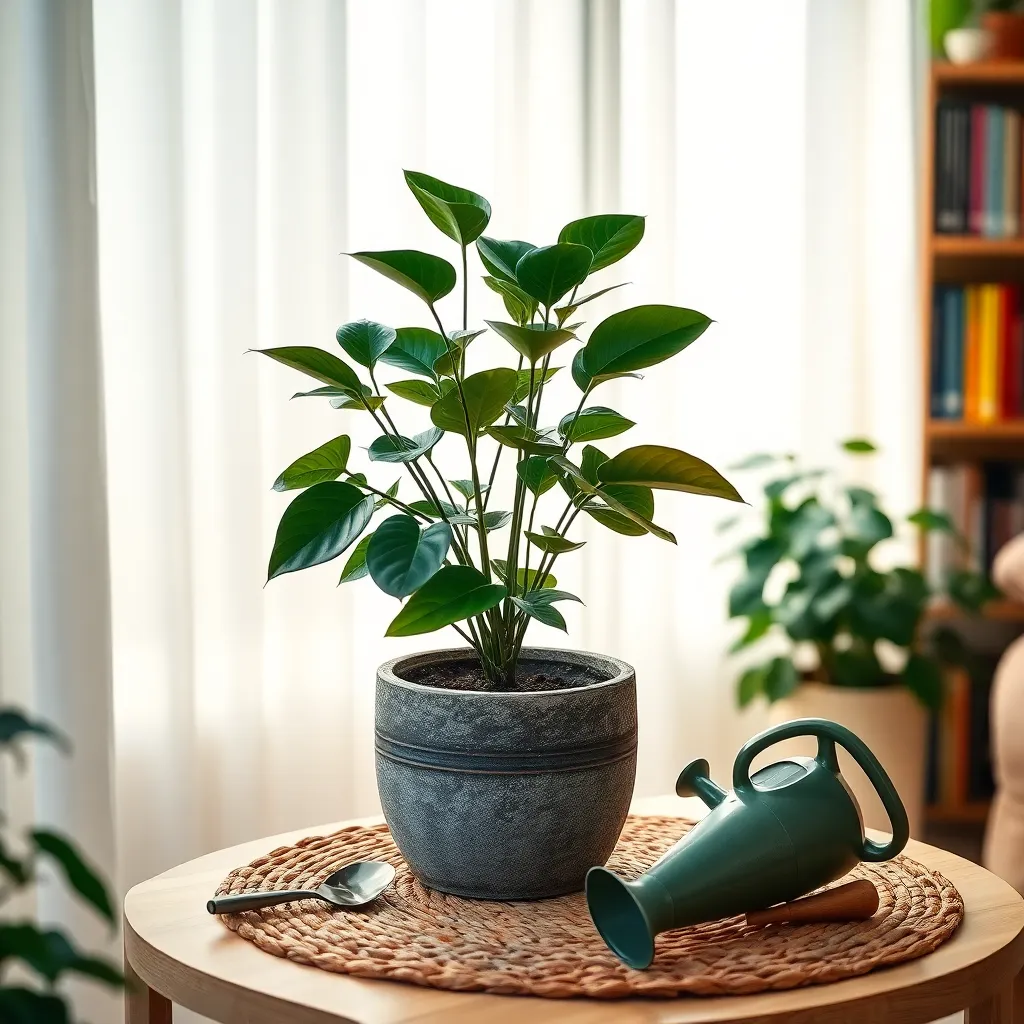
The ZZ Plant, known for its resilience, is an excellent choice for those seeking a low-maintenance indoor plant. It thrives in low-light conditions, making it perfect for spaces with limited natural sunlight.
To care for your ZZ Plant, ensure it is potted in well-draining soil, such as a cactus mix, to prevent root rot. Watering should be infrequent; allow the soil to dry out completely between waterings to mimic its native drought-prone environment.
Avoid placing the ZZ Plant in direct sunlight, as its leaves can scorch. Instead, opt for a spot where it can enjoy indirect light, which will keep it healthy and vibrant.
For those looking to enhance their plant care skills, consider occasionally wiping the leaves with a damp cloth to remove dust and allow for better photosynthesis. Additionally, fertilize sparingly, using a balanced liquid fertilizer once every six months during the growing season to support its growth.
Snake Plant: Stylish and Sturdy
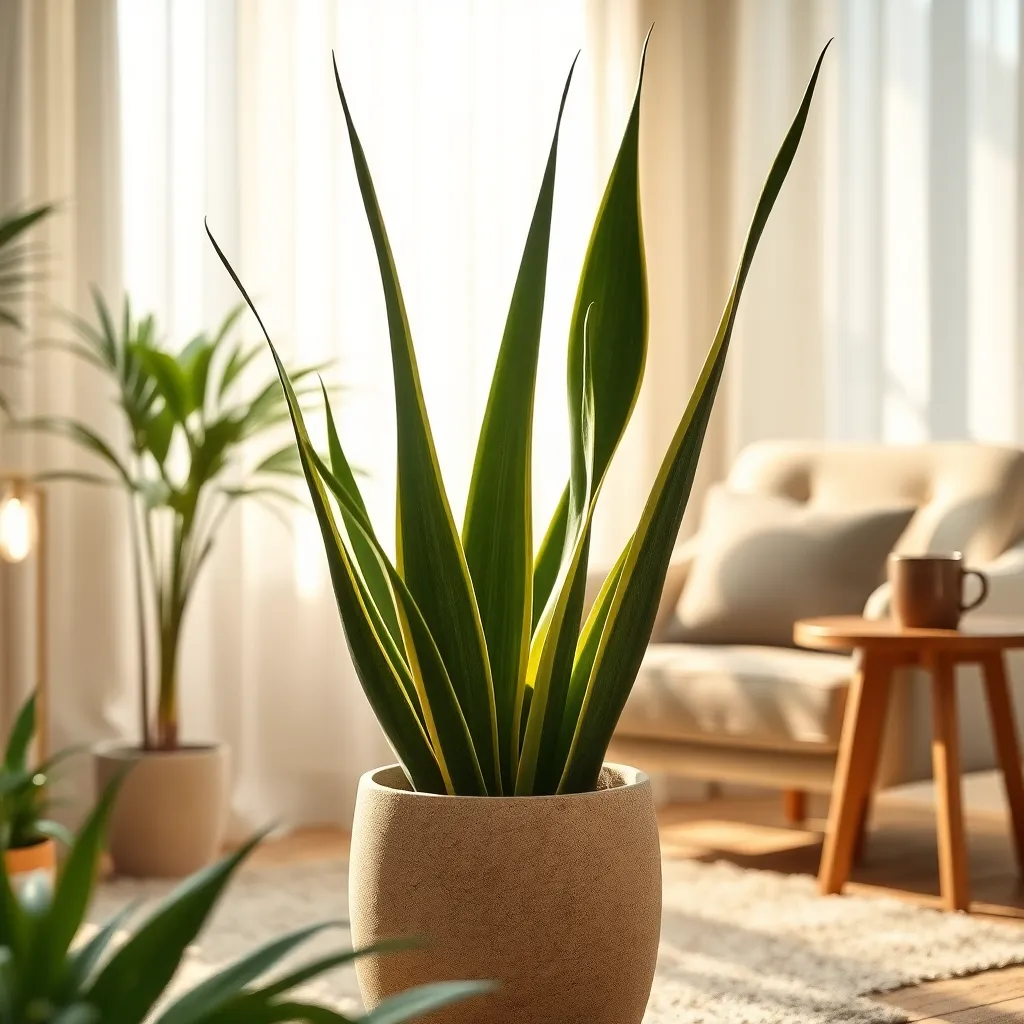
The snake plant, also known as Sansevieria or mother-in-law’s tongue, is a popular choice for those seeking a stylish yet low-maintenance indoor plant. Its tall, sword-like leaves bring a touch of modern elegance to any room, making it a favorite among interior designers and plant enthusiasts alike.
This resilient plant thrives in a wide range of conditions, including low-light environments, which makes it perfect for apartments or offices with limited natural light. To keep your snake plant healthy, place it in indirect sunlight and ensure that it is potted in well-draining soil, such as a cactus or succulent mix, to prevent root rot.
Watering your snake plant is straightforward: allow the soil to dry out completely between waterings, which typically means every two to six weeks depending on the humidity and temperature of your home. Overwatering is the most common mistake made with snake plants, so it’s better to err on the side of underwatering.
For those looking to propagate their snake plant, it can be easily done by dividing the root ball or by leaf cuttings. Simply cut a healthy leaf into sections, let them callous over for a day or two, and plant them in moist soil, where they’ll soon develop roots.
Pothos: The Versatile Climber
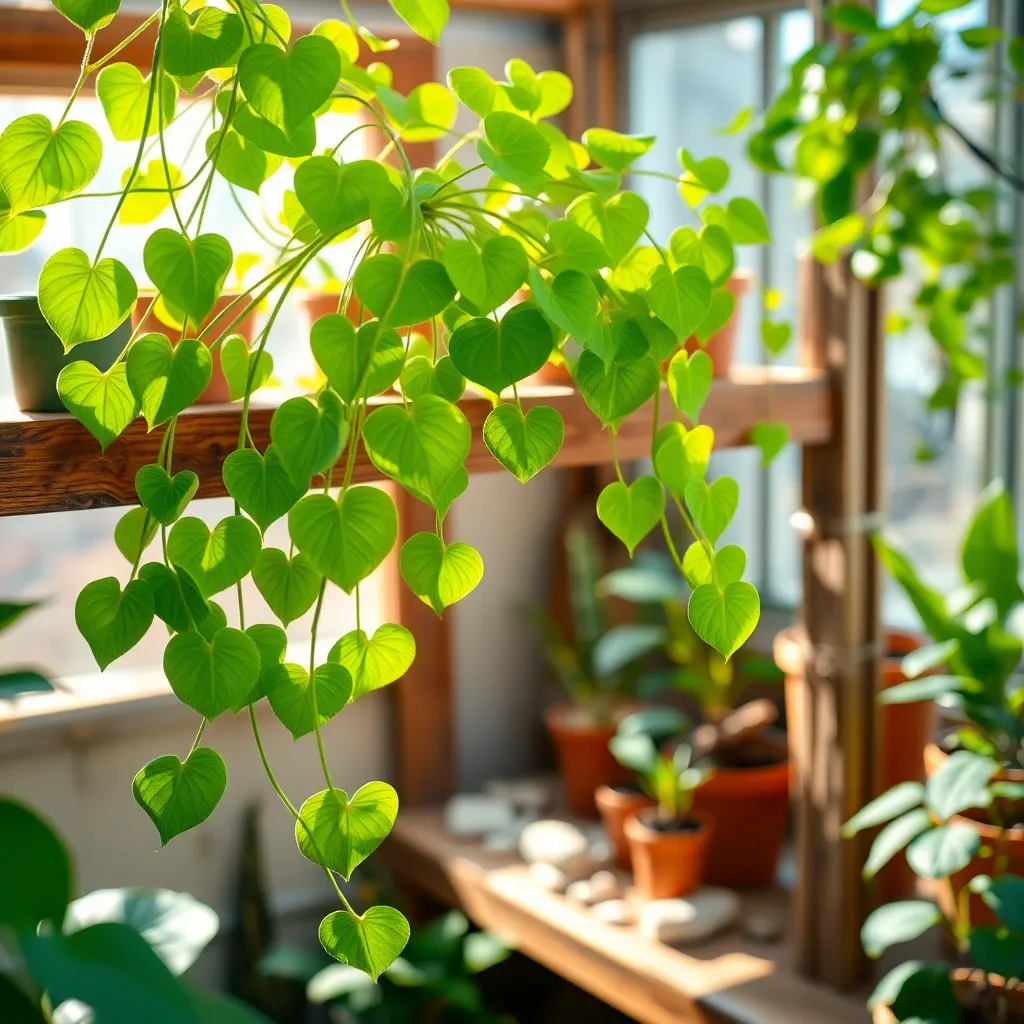
Pothos, known for its vibrant green leaves and adaptability, is an excellent choice for indoor spaces that receive low light. This versatile climber can thrive in various environments, making it a favorite among both beginners and seasoned gardeners.
To ensure your pothos flourishes, use a well-draining potting mix that retains moisture without becoming waterlogged. Water your plant when the top inch of soil feels dry, typically every 1-2 weeks, adjusting the frequency based on temperature and humidity levels.
Pruning is a simple way to encourage bushier growth and manage the plant’s trailing habit. Use clean, sharp scissors to cut back long vines, and consider rooting the cuttings in water to propagate new plants.
For those seeking to elevate their gardening skills, try training your pothos to climb a moss pole or trellis for an impressive display. Regularly rotate the pot to ensure even growth and prevent the plant from leaning toward the light source.
Philodendron: A Green Delight
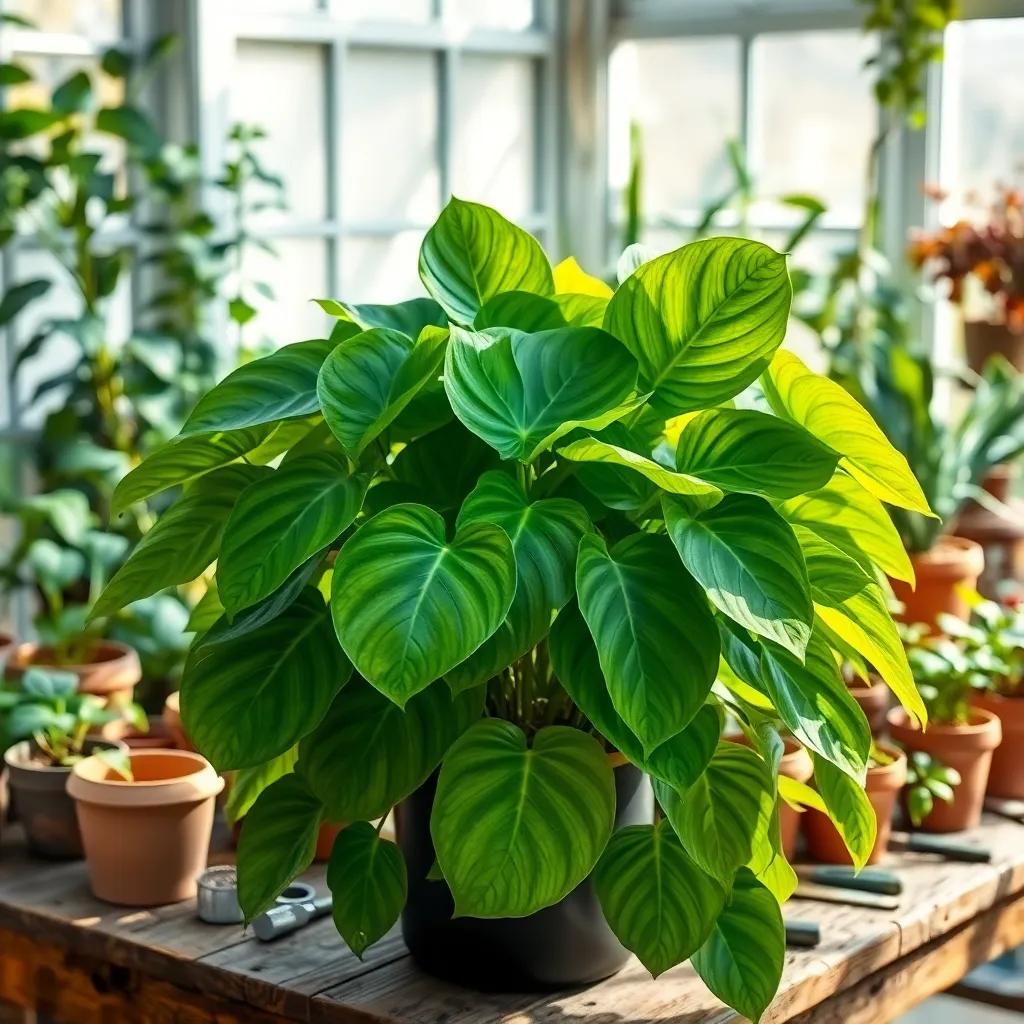
Philodendrons are a wonderful addition to any indoor garden, thriving in low-light conditions while adding lush greenery to your space. These plants are particularly forgiving, making them an ideal choice for beginners who might be new to plant care.
To ensure a healthy Philodendron, place it in a spot with indirect light, as too much direct sunlight can scorch its leaves. It’s important to water the plant when the top inch of soil feels dry to the touch, ensuring proper hydration without overwatering.
Using a well-draining potting mix is crucial for Philodendrons, as it prevents root rot by allowing excess water to escape. You can create an ideal mix by combining equal parts of peat moss, perlite, and orchid bark.
Advanced gardeners might consider propagating their Philodendrons through stem cuttings, a rewarding way to expand their collection. Simply take a cutting with a few nodes, place it in water, and watch new roots emerge before potting it in soil.
Spider Plant: Easy-Care Elegance
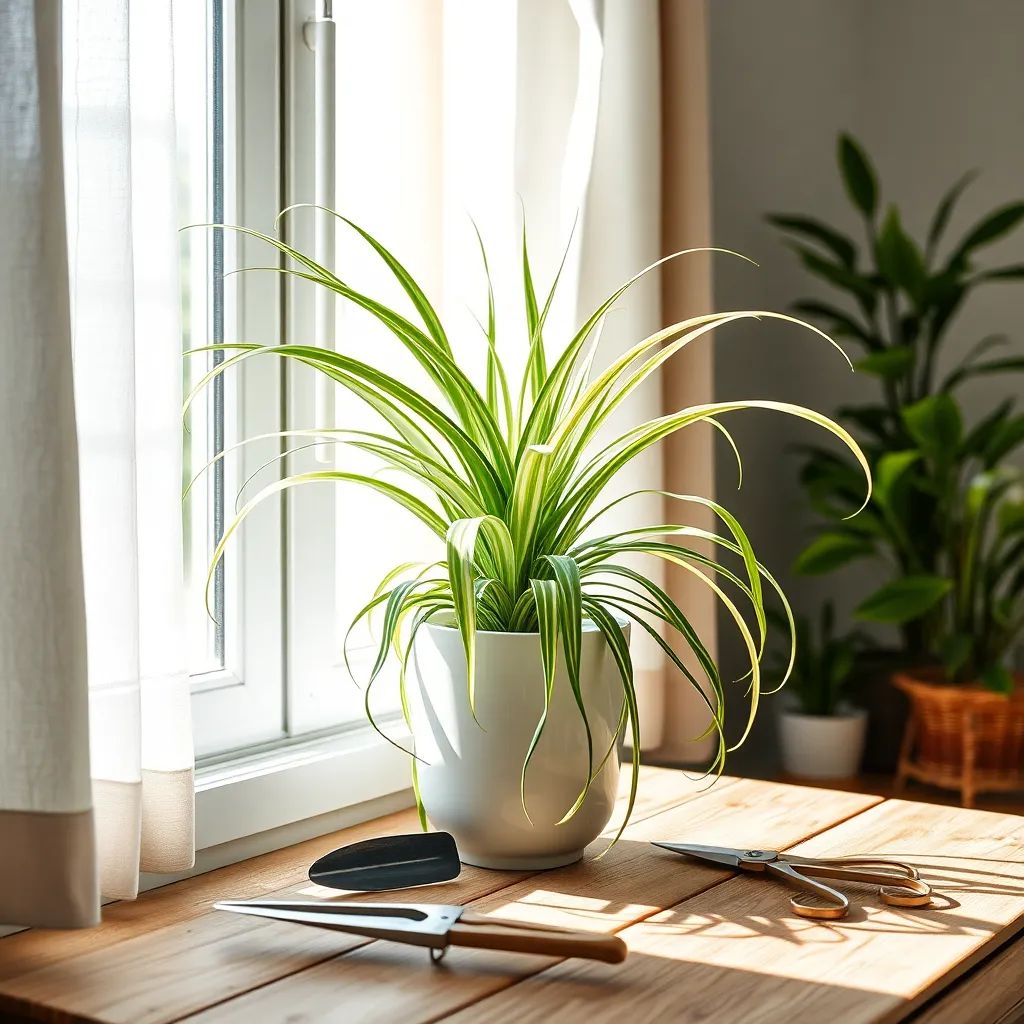
The spider plant, with its arching leaves and charming offshoots, is a perfect choice for those seeking easy-care elegance. Known scientifically as Chlorophytum comosum, this resilient houseplant thrives well in indirect sunlight, making it ideal for rooms with limited natural light.
For optimal growth, plant your spider plant in a pot with well-draining, general-purpose potting soil. Water it moderately, ensuring the soil dries out between waterings to prevent root rot; overwatering is the most common mistake with this plant.
Enhance your spider plant’s beauty by occasionally misting its leaves, especially if you live in a dry climate. This practice not only keeps the foliage lush but also helps the plant maintain its health by increasing humidity.
Advanced gardeners can propagate spider plants easily by detaching the plantlets or “spiderettes” that dangle from the mother plant. Simply place these tiny plants in water until roots develop, then plant them in soil to start a new lush display.
Cast Iron Plant: Resilient Beauty
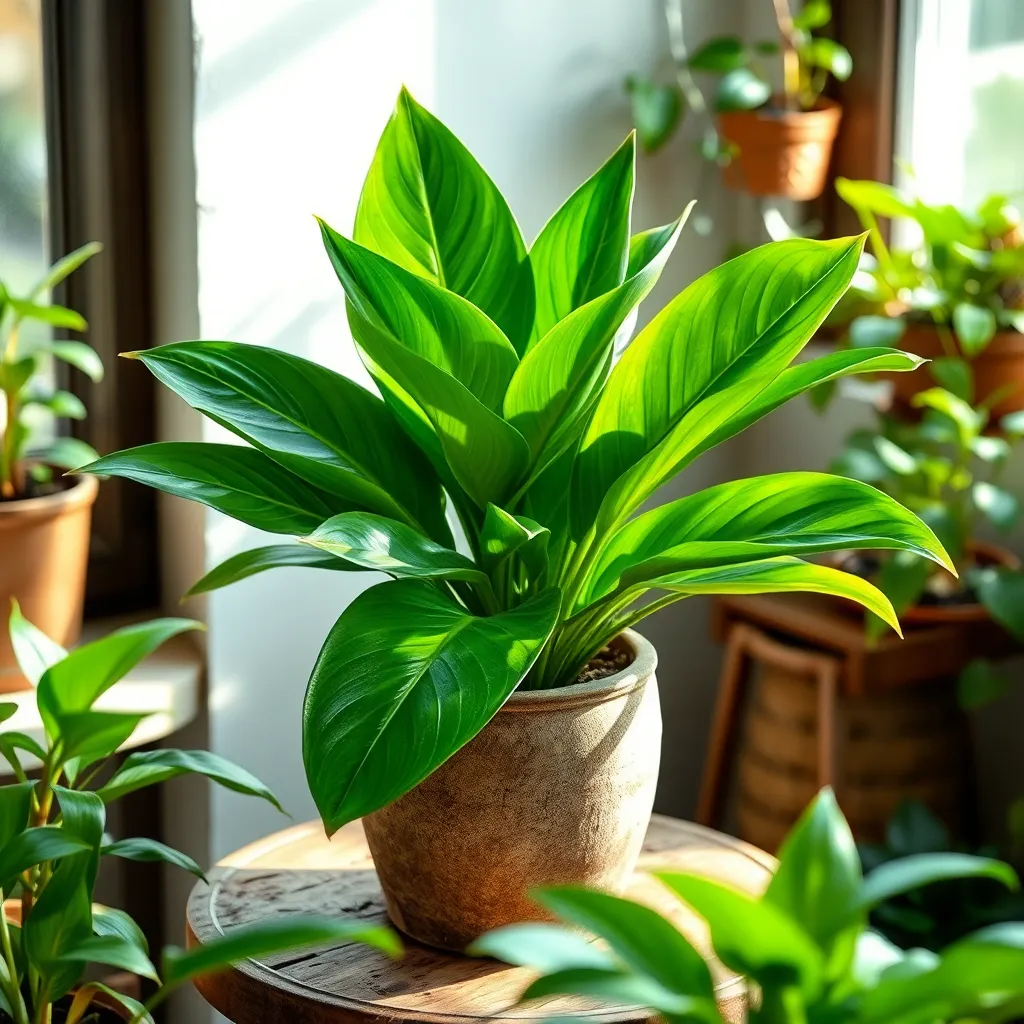
Known for its exceptional resilience, the Cast Iron Plant is ideal for those seeking a low-maintenance beauty. Not only can it thrive in low light, but it also tolerates neglect, making it a perfect choice for busy individuals.
To ensure its success, plant the Cast Iron Plant in well-draining soil, such as a potting mix with added perlite or sand. Water the plant every 10-14 days, allowing the soil to dry out between waterings to prevent root rot.
Avoid placing the plant in direct sunlight, as its leaves can scorch easily. Instead, consider a location with filtered light or in a room with ambient lighting for optimal growth.
For advanced care, fertilize the Cast Iron Plant once a month during the growing season with a balanced, water-soluble fertilizer. Prune any damaged or yellowing leaves to maintain its lush appearance and encourage new growth.
Ferns: Adding Soft Texture Indoors
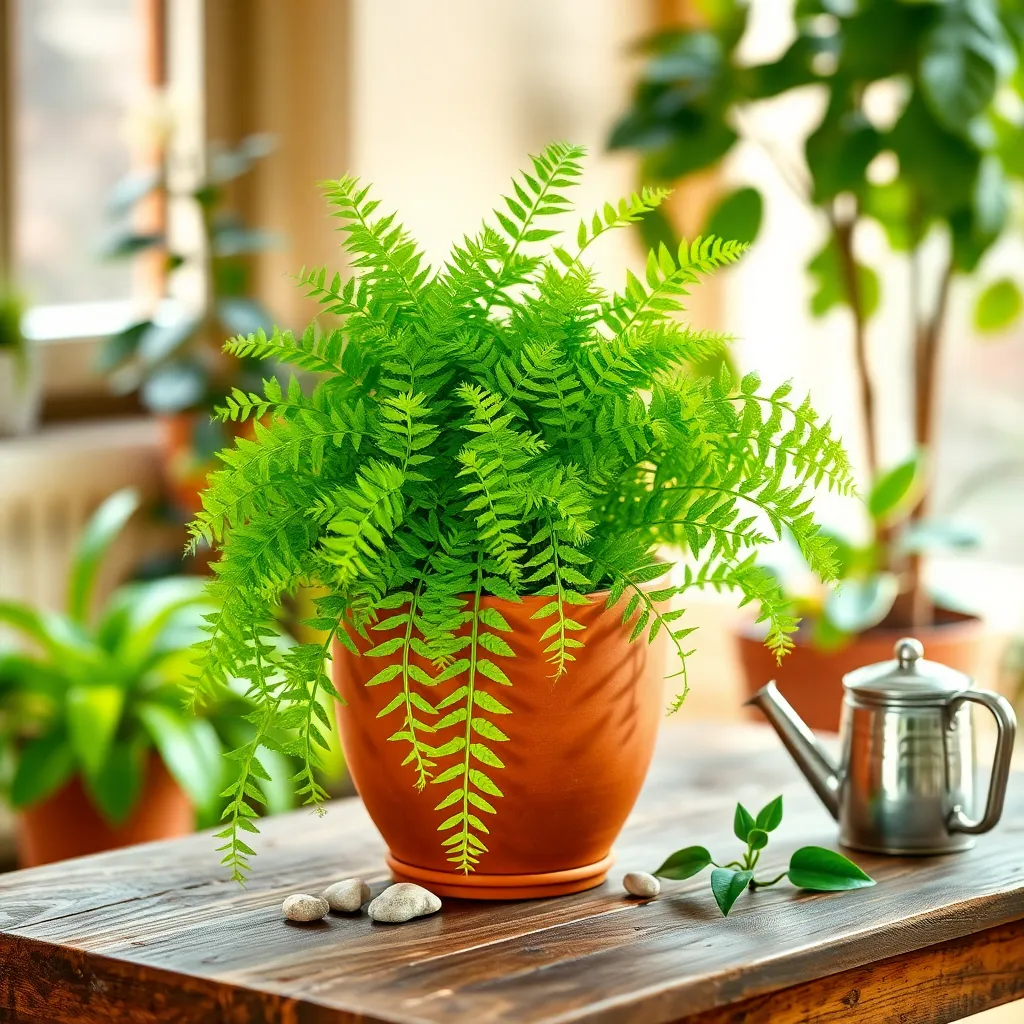
Ferns are perfect for adding a soft texture to your indoor spaces, thriving in low-light conditions. Their lush, green fronds create a serene environment, making them ideal for homes and offices with minimal sunlight.
For successful fern cultivation, ensure they are planted in a well-draining potting mix rich in organic matter. You can create a suitable blend by mixing equal parts peat moss, perlite, and pine bark, which provides the necessary aeration and moisture retention.
Watering ferns requires attention to moisture levels, as they prefer consistently damp soil without becoming waterlogged. Check the top inch of soil regularly and water when it feels slightly dry to the touch, using room-temperature water to avoid shocking the plant.
Humidity is crucial for ferns, so consider placing a humidifier nearby or regularly misting the leaves to replicate their natural environment. Alternatively, grouping ferns together or placing them on a tray filled with water and pebbles can also help maintain the necessary humidity.
While ferns generally demand minimal fertilization, a diluted liquid fertilizer applied every 4-6 weeks during the growing season can promote healthy growth. Avoid over-fertilizing, as this can damage the delicate roots and fronds.
Conclusion: Growing Success with These Plants
In nurturing relationships, much like caring for plants, it’s essential to find the right balance and environment for growth. This article has explored 10 beautiful indoor plants—such as the resilient Snake Plant, the lush Peace Lily, and the vibrant Spider Plant—that thrive with minimal sunlight, drawing a parallel to how relationships flourish with foundational care, understanding, patience, and adaptability. Just as these plants demonstrate their resilience in low-light conditions, relationships thrive on nurturing even in less-than-perfect circumstances.
As an immediate step, consider introducing one of these plants into your living space as a visual reminder of the care and attention both plants and relationships require. This simple act can inspire more meaningful interactions with your loved ones.
To ensure you have this valuable resource at your fingertips, save or bookmark this article. It serves as a reminder that relationships, like plants, need consistent, thoughtful care to flourish.
Remember, successful relationships are built on small, continuous acts of kindness and attention. Let this be the beginning of a more attentive and nurturing approach in all your interactions. Embrace this journey towards deeper connection and watch your relationships bloom beautifully.

